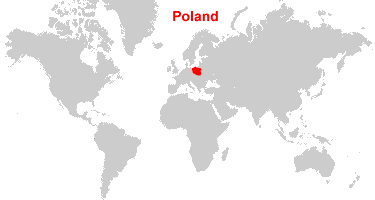|
Many Polish cities are centred on an attractive Old Town, but none compare to Krakow for effortless beauty.*
The musicians of Poland, over the course of history, have developed and popularized a variety of musicgenres and folk dances such as mazurka, polonaise, krakowiak, polska partner dance, oberek; as well as the sung poetry genre (poezja śpiewana) and others.+
At the end of the 18th century, Polish classical music evolved into national forms like the Polonaise and Mazurka — perhaps the first distinctively Polish art music .+
Poland has always been a very open country to new music genres and even before the fall of the communism, music styles like rock, metal, jazz, electronic,and new wave were well-known. +
|
Auschwitz, which began life as a Polish military barracks but was co-opted by the Nazi Germans in 1940 as an extermination camp. Here is the infamous gate, displaying the grimly cynical message: 'Arbeit Macht Frei' (Through Work Freedom). Some 13 of 30 surviving prison blocks house museum exhibitions.*
The origin of Polish music can be traced as far back as the 13th century, from which manuscripts have been found in Stary Sacz , containing polyphonic compositions related to the Parisian Notre Dame School.+
Between the wars, a group of new and emerging composers formed the Association of Young Polish Musicians...+
Poland developed their gothic metal scene in the 1990s, although it was in interfuse with gothic rock movement since the beginning, focused in around of Castle Party Festival founded in 1994.+
|
...Birkenau, where most of the killings took place. Massive and purpose-built to be efficient, the camp had more than 300 prison barracks. Here you'll find remnants of gas chambers of crematoria.*
During the 17th century, Polish composers from this period focused on baroque religious music, concertos for voices, instruments, and basso continuo, a tradition that continued into the 18th century.+
Polish folk music was collected in the 19th century by Oskar Kolberg , as part of a wave of Polish national revival .+
|
*These captions are from Eastern Europe - Lonely Planet's travel guide.
+These captions are from Wikipedia.
+These captions are from Wikipedia.

